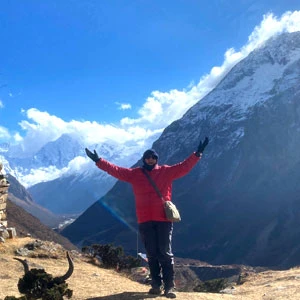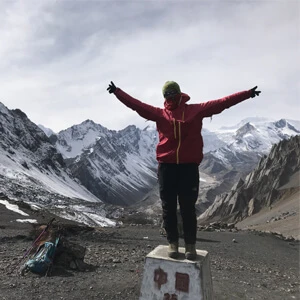Gokyo Valley Trek Overview
The Gokyo Valley Trek is one of the finest routes available through Sagarmatha National Park and one that neatly sidesteps the crowded trails to Everest Base Camp while providing immediacy and views of the iconic peak that are more than enough to sustain a basic interest in the mountain without the need to pay homage at its foothills. The rewards of the Gokyo Valley Trek are many, including the superb scenery and wildlife of Sagarmatha National Park, the natural beauty and sublime setting of Gokyo Valley and its crystalline lakes, and the superb and virtually unparalleled panoramic views of Everest, Lhotse, Makalu, Cho Oyu and a host of other Himalayan giants from the prospect of Gokyo Ri (5360 meters).
Following the typical flight to Lukla, the trek sets out on the same path as the route to Everest Base Camp through historic Namche Bazaar, then veers away to follow the turbid waters of the Dudh Koshi River (Milky River) upstream to Ngozumpa Glacier and the natural basin amidst snow-capped peaks that are home to the beautiful Gokyo Valley and its serene series of lakes and villages. Here the Sherpas live out a traditional and largely untouched existence in their fortuitous isolation from the outside world, with large herds of hardy yaks to sustain them and profound Buddhist beliefs guiding their lives and their famed hospitality towards strangers. To wander through the mountain bastion of the Sherpas, taking in its stark beauty and the peaceful culture of its people is to sit back and wonder if Gokyo Valley wasn't indeed the model for Shangri-La.
As superb as the Gokyo Trek is the option exists to extend the magic even further by journeying on over the pass of Cho La (5420 meters) towards Everest Base Camp, or by heading in the other direction over Renjo La (5360 meters) for the alternative p5,357 metersath back to Namche and Lukla.
The Trek to Gokyo Valley represents a wonderful opportunity to visit one of the region's most remote and beautiful valleys, one that allows us to take in the Sherpas living out a tranquil existence that touches something deep within us and calls to simpler and less complex times. Now's the time to see it, so why not let Nepal Trekking Experts arrange your visit to this Himalayan treasure? Our staff are ready and waiting to arrange all the details for you or to listen to your approach to the trek.
Gokyo Lake Trekking Difficulty
This particular trek is moderately challenging as it doesn't involve technical climbing. Having said that, Gokyo Ri takes you to an altitude of 5,357 meters which possesses a potential risk of altitude sickness, even for experienced trekkers. Additionally, this journey involves long walking days, typically 5-7 hours of trekking daily, on steep, rocky trails. While prior trekking experience is not mandatory, a good level of physical fitness is crucial.
Best Time To Trek Around Gokyo
The best time to trek around Gokyo glacier are during the primary trekkking seasons of Spring (March to May) and Autumn (September to November), with each offering unique experiences. During Spring, the weather is generally stable, with mild temperatures and longer daylight hours. Daytime temperatures in lower altitudes range between 10°C to 15°C. Likewise, the trails come alive with blooming rhododendrons and other alpine flowers, adding vibrant colors to the landscape. On the other hand, Autumn offers crystal-clear skies, stunning mountain vistas, and comfortable weather conditions. Post-monsoon rains clear the atmosphere, providing excellent visibility of the surrounding peaks and landscapes. Daytime temperatures are similar to Spring.
Gokyo Ri Trekking Permit Cost
When trekking with Nepal Trekking Experts, the permit fees are included in your package. Your guide will require your passport to obtain the required permits on your behalf.
- Khumbu Pasang Lhamu Rural Municipality Entrance Permit: The local government of Khumbu charges NPR 3000 per person, which must be paid in person in Lukla; this permit is not available in Kathmandu.
- Sagarmatha National Park Entry Permit: This permit can be obtained in Kathmandu at the Nepal Tourism Board Office or Monjo at the Park Entrance Gate. It costs NPR 3000 per person.
Kathmandu to Lukla Flights
For your information, Lukla’s flight normally will be operated from Ramechhap (Manthali Airport) in peak seasons, like October/November and March/April. If the airlines are too busy, then they might operate from mid-September in the fall and in May in the spring. It depends on air traffic and the rules of aviation. Ramechhap is located 144 kilometers east of Kathmandu, which takes 4-5 hours by car or van. Most people begin to drive at 2.00 am to get the earliest flight. Our package already includes the road transfer along with the flight.
In addition, you can also check out other awesome packages like Everest Three High Passes Trek, Everest Base Camp Trek, Manaslu Circuit Trek, Helambu Trek, and more.
How can I book For The Trek To Gokyo Valley?
To book your trek with us, you have to send a deposit of 10% of the total cost of the trek. Please also forward a copy of your passport, and flight details if and when available. For your convenience, you may forward the deposit to us online through our website. It is completely safe, and as soon as you make it, you will get an automatic receipt in your inbox. The rest of the payment can be paid upon arrival.
For more details, do not hesitate to contact our experts now.


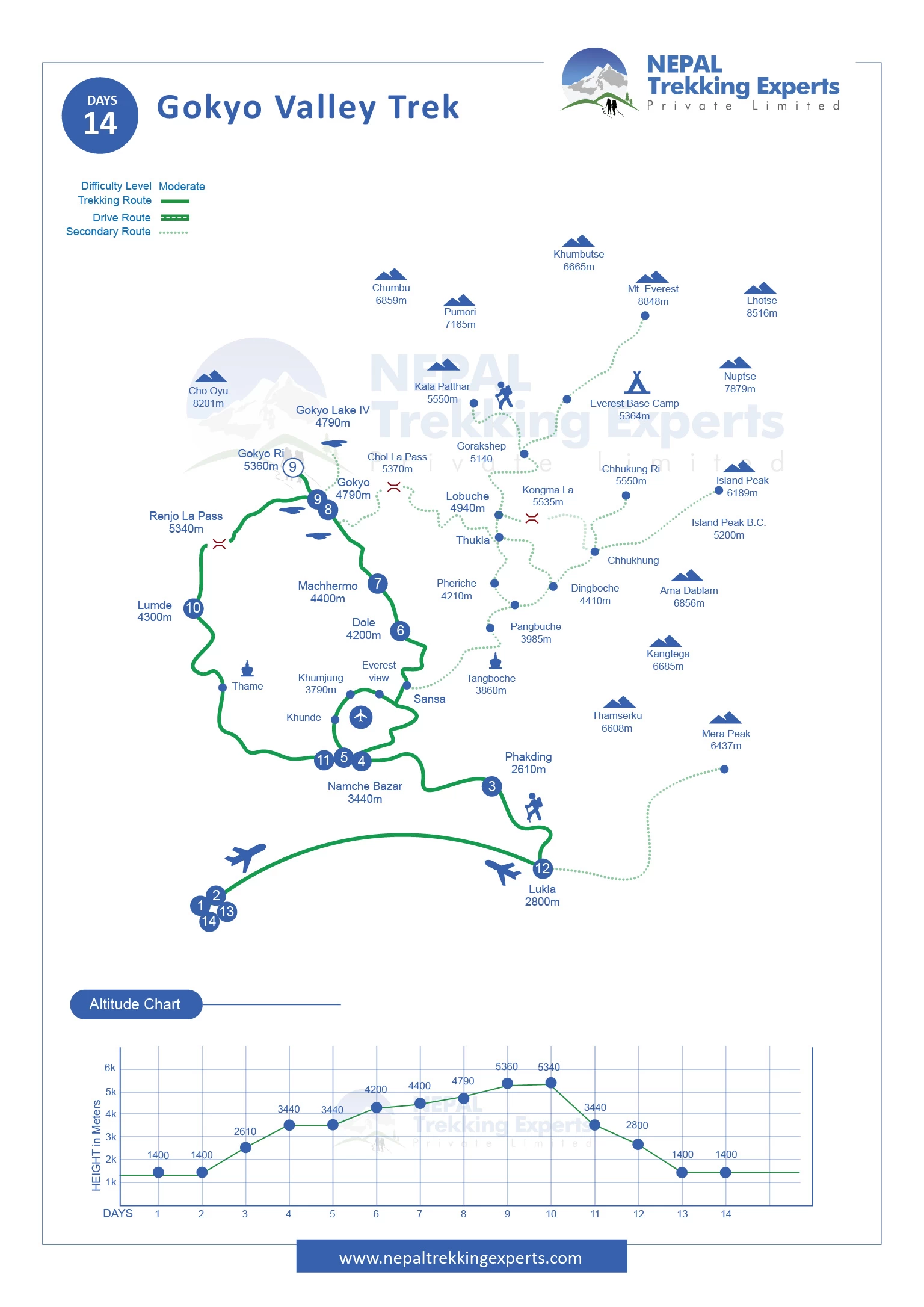

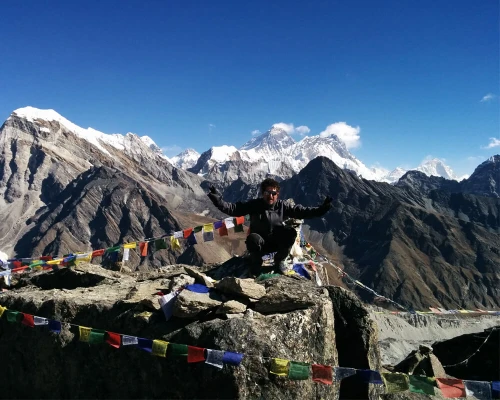
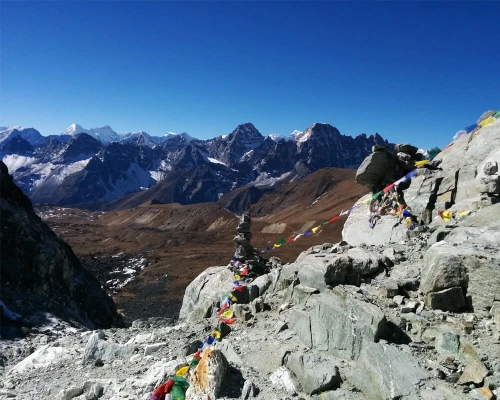
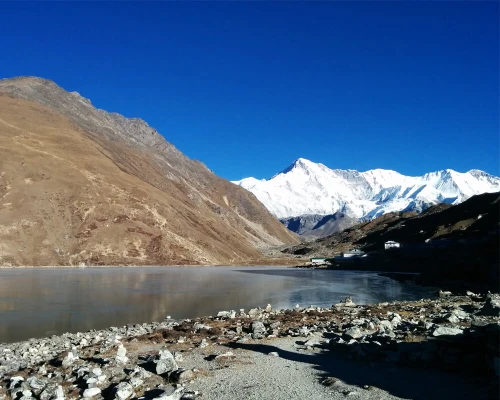

 based on 21 reviews
based on 21 reviews



